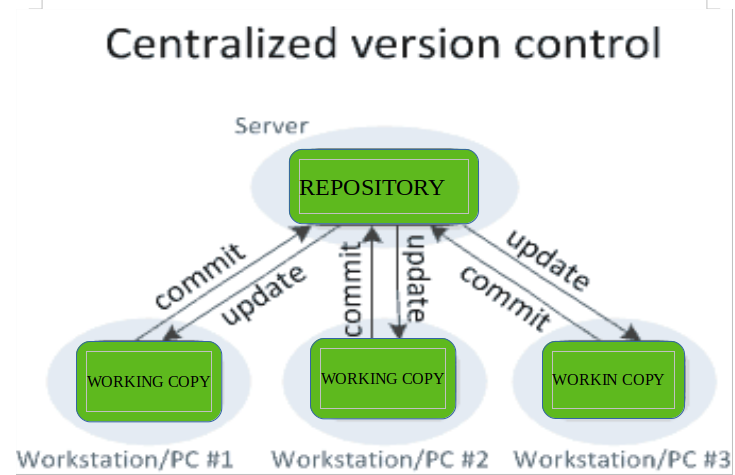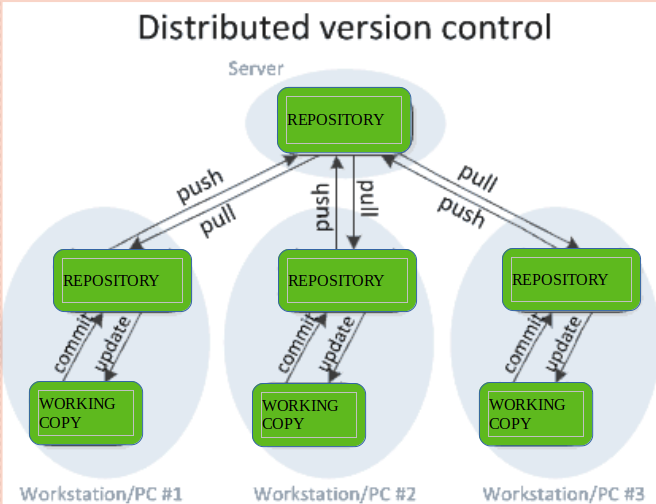
Version control is the practice of managing changes in a software code. Version control systems are software tools that manage changes to the source code over a period of time. These are also known as “source code management” or “Revision control systems”.
Let’s read more
Version control software keeps track of every modification to the code in a special kind of database. If a mistake is made, developers can turn back the clock and compare earlier versions of the code to help fix the mistake while minimizing disruption to all team members. Version Control Systems are basically a category of software tools that helps in saving and identifying the changes made in the files of computer programs, documents, or other collections of information so that it becomes easier to track those changes even after a long period of time. It becomes more interesting and useful for the developers because revisions can be restored.
Why Version Control system is so Important?
As we know that a software product is developed in collaboration by a group of developers they might be located at different locations and each one of them contributes in some specific kind of functionality/features. So in order to contribute to the product, they made modifications to the source code(either by adding or removing). A version control system is a kind of software that helps the developer team to efficiently communicate and manage(track) all the changes that have been made to the source code along with the information like who made and what change has been made. A separate branch is created for every contributor who made the changes and the changes aren’t merged into the original source code unless all are analyzed as soon as the changes are green signaled they merged to the main source code. It not only keeps source code organized but also improves productivity by making the development process smooth.
A Version Control System has always been the need of DEVs. In the early era when the teams were not that big then also maintaining the development logs of programming throughout the Software Development was not a piece of cake. It includes a lot and a lot of documentation and took a lot of time. Through the development of technology and working styles, a new kind of problem occurs that was when a team of developers working on a project, it may be possible that they are working from different locations and each one of them has to contribute to some kind of features, then sharing of codes for discussion and merging becomes a tedious job.
So there were two main problems first one was documentation and the second one was merging codes into one place without any kind of conflicts. To solve these issues developers created a Version Control System. VCS allows users to roll back files back to their previous state, users can even roll back the entire project to its initial state, they can compare changes, can see who has modified the project and when.
Benefits of the version control system:
a) Enhances the project development speed by providing efficient collaboration,
b) Leverages the productivity, expedite product delivery, and skills of the employees through better communication and assistance,
c) Reduce possibilities of errors and conflicts meanwhile project development through traceability to every small change,
d) Employees or contributor of the project can contribute from anywhere irrespective of the different geographical locations through this VCS,
e) For each different contributor of the project a different working copy is maintained and not merged to the main file unless the working copy is validated. A most popular example is Git, Helix core, Microsoft TFS,
f) Helps in recovery in case of any disaster or contingent situation,
g) Informs us about Who, What, When, Why changes have been made.
Some version control system terms:
- A repository: Source code + Snapshot (historical version) – It can be thought of as a database of changes. It contains all the edits and historical versions (snapshots) of the project.
- Copy of Work (sometimes called as checkout): It is the personal copy of all the files in a project. You can edit to this copy, without affecting the work of others and you can finally commit your changes to a repository when you are done making your changes.
Types of Version Control Systems:
- Local Version Control Systems
- Centralized Version Control Systems
- Distributed Version Control Systems
Local Version Control Systems: It is one of the simplest forms and has a database that kept all the changes to files under revision control. RCS is one of the most common VCS tools. It keeps patch sets (differences between files) in a special format on disk. By adding up all the patches it can then re-create what any file looked like at any point in time.
Centralized Version Control Systems: Centralized version control systems contain just one repository and each user gets their own working copy. You need to commit to reflecting your changes in the repository. It is possible for others to see your changes by updating.
Two things are required to make your changes visible to others which are:

The benefit of CVCS (Centralized Version Control Systems) makes collaboration amongst developers along with providing an insight to a certain extent on what everyone else is doing on the project. It allows administrators to fine-grained control over who can do what.
It has some downsides as well which led to the development of DVS. The most obvious is the single point of failure that the centralized repository represents if it goes down during that period collaboration and saving versioned changes is not possible. What if the hard disk of the central database becomes corrupted, and proper backups haven’t been kept? You lose absolutely everything.
Distributed Version Control Systems: Distributed version control systems contain multiple repositories. Each user has their own repository and working copy. Just committing your changes will not give others access to your changes. This is because commit will reflect those changes in your local repository and you need to push them in order to make them visible on the central repository. Similarly, When you update, you do not get other’s changes unless you have first pulled those changes into your repository.
To make your changes visible to others, 4 things are required:
- You commit
- You push
- They pull
- They update
The most popular distributed version control systems are Git, Mercurial. They help us overcome the problem of single point of failure.

Purposeof Version Control:
- Multiple people can work simultaneously on a single project. Everyone works on and edits their own copy of the files and it is up to them when they wish to share the changes made by them with the rest of the team.
- It also enables one person to use multiple computers to work on a project, so it is valuable even if you are working by yourself.
- It integrates the work that is done simultaneously by different members of the team. In some rare case, when conflicting edits are made by two people to the same line of a file, then human assistance is requested by the version control system in deciding what should be done.
- Version control provides access to the historical versions of a project. This is insurance against computer crashes or data loss. If any mistake is made, you can easily roll back to a previous version. It is also possible to undo specific edits that too without losing the work done in the meanwhile. It can be easily known when, why, and by whom any part of a file was edited.
<Source taken from here >
You can read about Git and GitHub in our next article.. But before it . will love to know your comments on this one. Thank you, and Happy testing..
Source link
